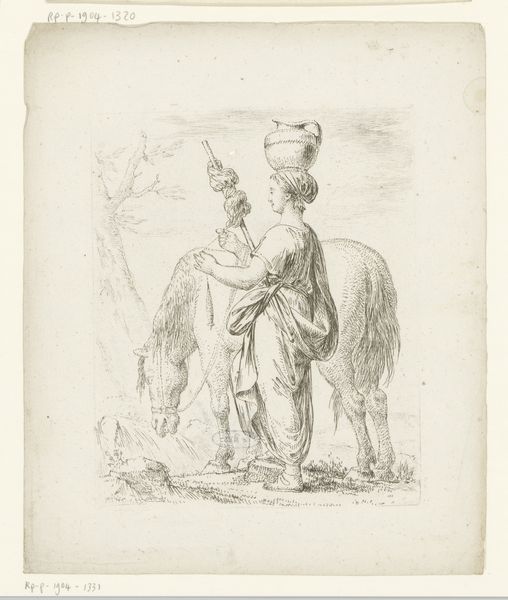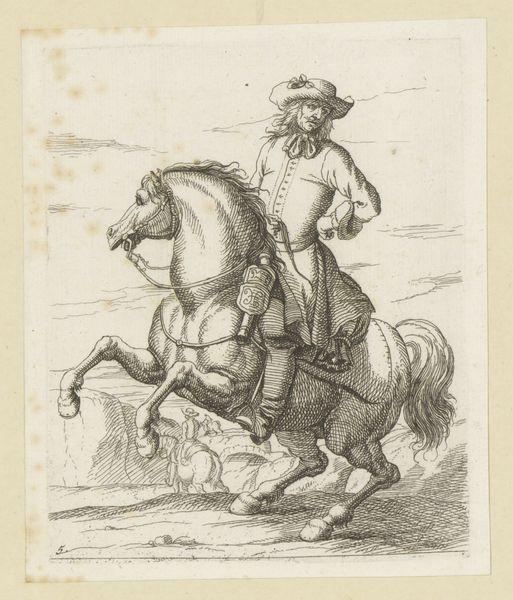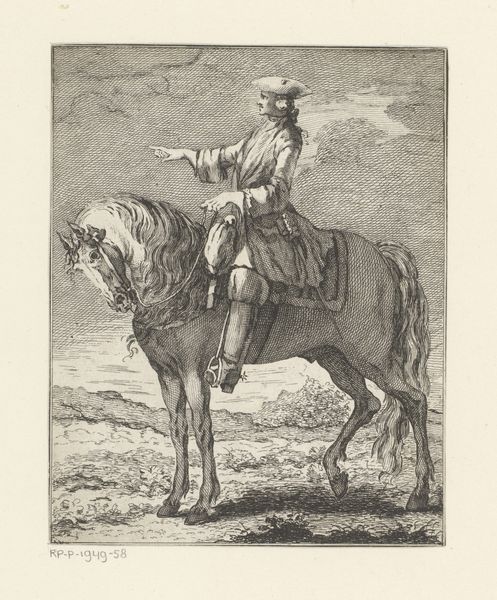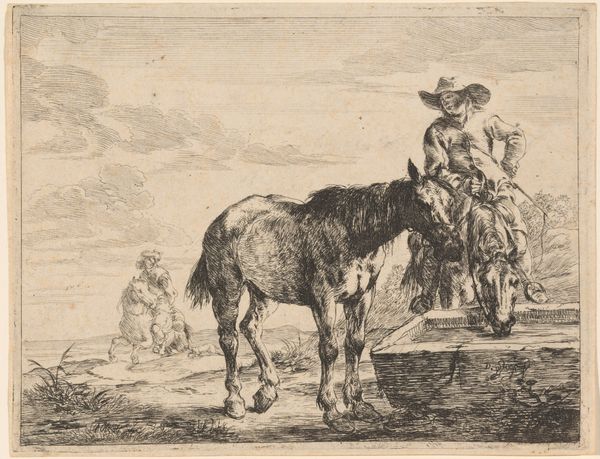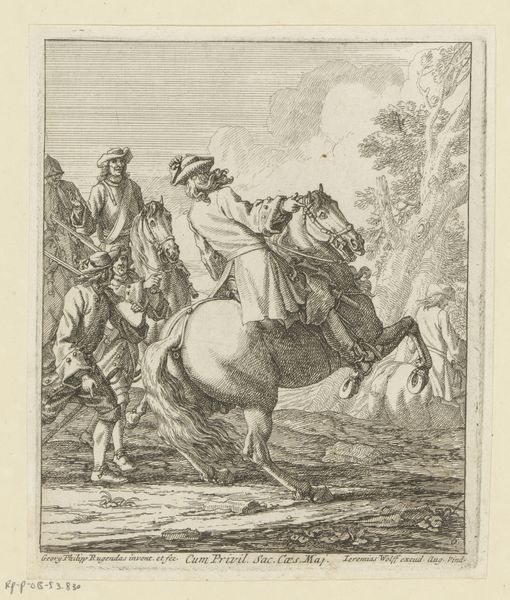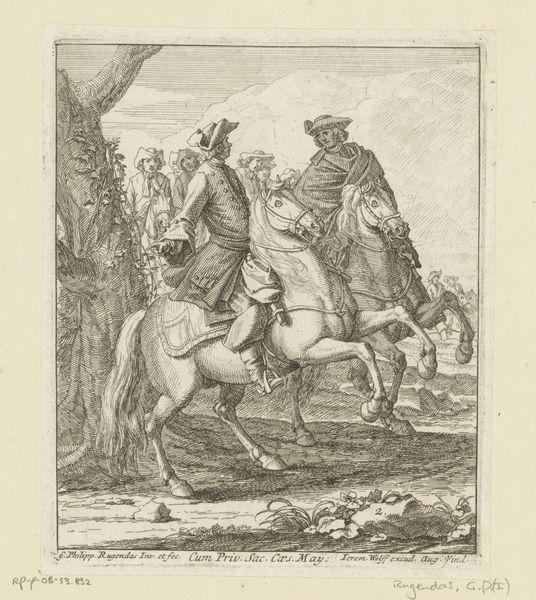
Dimensions: 321 mm (height) x 260 mm (width) (bladmaal)
Curator: This drawing, created by Francesco Casanova sometime between 1727 and 1802, is entitled "Horsemen in a Landscape." You can view it here at the Statens Museum for Kunst. What do you make of it? Editor: There's a romantic melancholy to it, isn't there? The soft grey tones, the lone rider against that vast, undefined background…it evokes a sense of journey and perhaps even a touch of isolation. Curator: Yes, there's a definite romantic sensibility, although filtered through a Baroque lens. Observe the figures: men on horseback were significant symbols of power, status, and conquest during the Baroque era, and that carries a strong masculine association. The feathered hat is interesting. Editor: Good point. Beyond mere power, they could signify control. Were horses culturally resonant back then? Curator: Undoubtedly! Horses weren't just transportation; they symbolized nobility, freedom, and military prowess. Think of the equestrian statues of monarchs. Even their posture in artwork told viewers about power and rank. And it's likely he knew what his patrons wanted. Editor: So it’s about evoking that entire complex of social power structures, class, and ambition, isn’t it? The image idealizes something real about that relationship between landscape, humans, and animals. How does its style contribute? Curator: I think Casanova uses the dry-media drawing technique—perhaps charcoal or graphite—to enhance that romantic feel, by giving the work soft contours and subtle shading, like the horse. Note how he renders a sense of depth by darkening some lines more than others. It's skillfully composed. Editor: Do you get the sense the men look weary, as if burdened by their stations or what? There's no indication of joy, and they are engulfed in darkness and a foggy atmosphere. Curator: Absolutely. The cultural role of a horsemen, leader, aristocrat, king could carry with it symbolic loads. These men, rendered in the atmospheric style you note, feel lost in the darkness—a visual signifier of moral decline that permeated the artwork of this era. Editor: It's a quiet but complex reflection on hierarchy and power. A glimpse into the era. Curator: Exactly. "Horsemen in a Landscape" shows that what might seem like a simple genre piece speaks volumes about identity and society at the time.
Comments
No comments
Be the first to comment and join the conversation on the ultimate creative platform.

